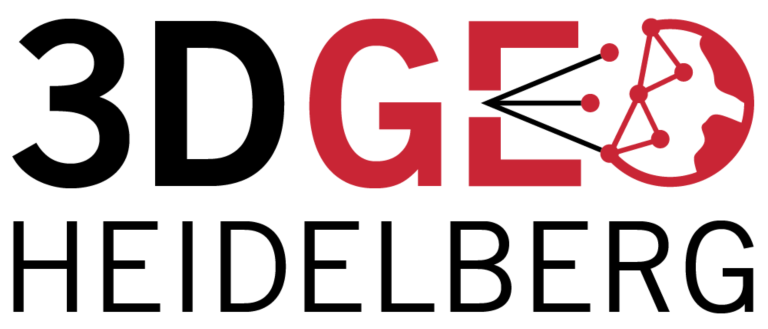Category: Lidar Group
-
Live from the Ötztal Alps (#3): Exploring high mountain 3D geoinformation
On the last day of fieldwork in the rotmoos valley two groups (terrestrial laser scanning (TLS) and photogrammetry) set off to the rotmoos glacier again. A second TLS dataset was aqcuired which enables the students to perform a change detection or deformation analysis. The electrical resistivity tomography (ERT) group futher explored the pre-Quaternary relief in…
-
Live from the Ötztal Alps (#2): Exploring high mountain 3D geoinformation
Today was the second day of field work in the Rotmoos valley in the Ötztal Alps for our 16 students. The hot sun challenged the data acquisition but the impressive landscape makes up for every effort. The terrestrial laser scanning group climbed up the valley flanks to acquire a high resolution point cloud from an…
-
Live from the Ötztal Alps (#1): Exploring high mountain 3D geoinformation
As part of the practical field training “3D Geodatenerfassung im Hochgebirge (Ötztal)”, 29 July – 04 August, 16 students explore pyhsical geography in an impressive high-mountain environment in the Ötztal valley, Austria. With the help of terrestrial LiDAR, RTK GNSS, close range photogrammetry and electrical resistivity tomography (ERT), multi-source datasets will be captured for the…
-
Follow-up to study with mobile low-cost 3D camera crop height measurements
The study “Mobile low-cost 3D camera maize crop height measurements under field conditions” (see the respective blog entry) is now available also as print version: The updated citation is: Hämmerle, M. & Höfle, B. (2018): Mobile low-cost 3D camera maize crop height measurements under field conditions. Precision Agriculture 19(4), pp. 630-647. doi: 10.1007/s11119-017-9544-3.
-
Continued capturing of an active rock glacier in 3D
For the fourth consecutive year, the 3DGeo team acquired the rock glacier Äußeres Hochebenkar in the Austrian Ötztal by terrestrial laser scanning. This adds another point cloud to the multitemporal dataset to observe how the active rock glacier changes over the years. In an elevation over 2600 m a.s.l., the complex terrain on and around…
-
Validation of fracture data recognition in rock masses by automated plane detection in 3D point clouds
Digital outcrop models provide a powerful data basis to obtain orientation information on rock masses. Robust and transferrable automatic methods are required to process and analyze these data, as outcrops and hence acquired 3D point clouds are influenced by varying conditions depending e.g., on the site, atmospheric conditions and other factors. A crucial aspect in…
-
Talk on methods and applications for large geospatial point clouds
On Wednesday, Roderik Lindenbergh from TU Delft (NL) gave an exciting talk on robust geometry extraction in large spatial point clouds in the frame of the IWR colloquium at the Interdisciplinary Center for Scientific Computing. With focus on robust and novel methods of geoinformation extraction from these special datasets, the audience was taken on a…
-
IWR Colloquium on Robust Geometry Extraction in Large Spatial Point Clouds (Prof. Roderik Lindenbergh)
Everyone interested is cordially invited to the talk of Prof. Roderik Lindenbergh (TU Delft, NL) on Robust geometry extraction in large spatial point clouds in the frame of the IWR Colloquium at the Interdisciplinary Center for Scientific Computing. When: Wednesday, 27th June 2018, 14:15 Where: Conference Room (5th Floor), Mathematikon, INF 205 Before the talk,…
-
Cutting-edge 4D LiDAR research in local newspaper
This morning, the Rhein-Neckar-Zeitung (RNZ) published an article (in German) about our research on 4D LiDAR for snow cover monitoring. The angle for the article by Doris Burger is the Environmental Research Station Schneefernerhaus near the summit of the Zugspitze, where members of the 3DGeo recently acquired a highly temporal 3D time series dataset of…
-
Colloquium on Classification of 3D Point Clouds using Deep Neural Networks
We cordially invite everybody interested to our next open GIScience colloquium talk The speaker is Lukas Winiwarter TU Wien, Department of Geodesy and Geoinformation, Research Group Photogrammetry When: Monday 18.06.2018, 2:15 pm Where: INF 348, room 015 (Institute of Geography, Heidelberg University) Classification of 3D Point Clouds using Deep Neural Networks Per-point classification (semantic labeling) is an…
-
Full publication of multitemporal multisensor dataset from an Arctic permafrost research site
The multisensor datasets acquired in the three field campaigns of the PermaSAR project have recently been published on the Open Access data library PANGAEA: Anders, K., Antonova, S., Beck, I., Boike, J., Höfle, B., Langer, M., Marsh, P., Marx, S., (2018): Multisensor ground-based measurements of the permafrost thaw subsidence in the Trail Valley Creek, NWT,…
-
Information Extraction from LiDAR Intensity Data and Multispectral LiDAR Technology
LiDAR is a consolidated technology for topographic mapping and 3D reconstruction, which is implemented in several platforms On the other hand, the exploitation of the geometric information has been coupled by the use of laser intensity, which may provide additional data for multiple purposes. This option has been emphasized by the availability of sensors working…


